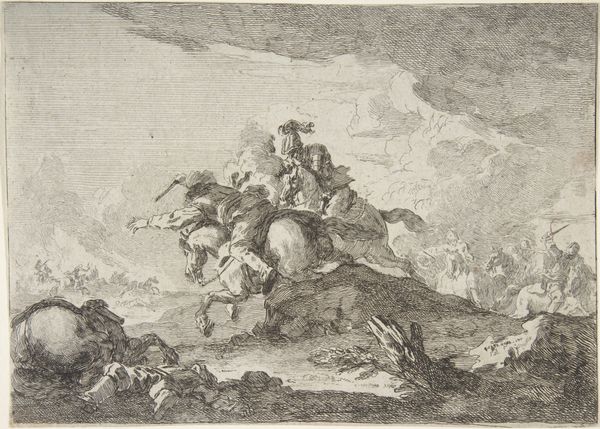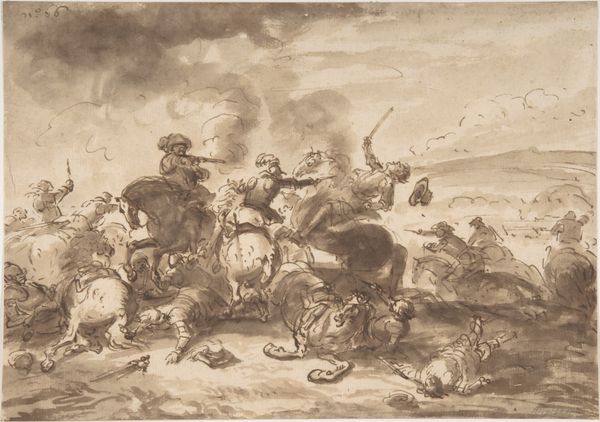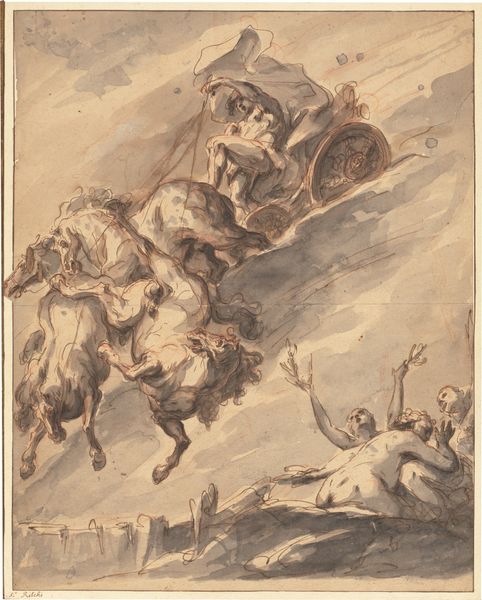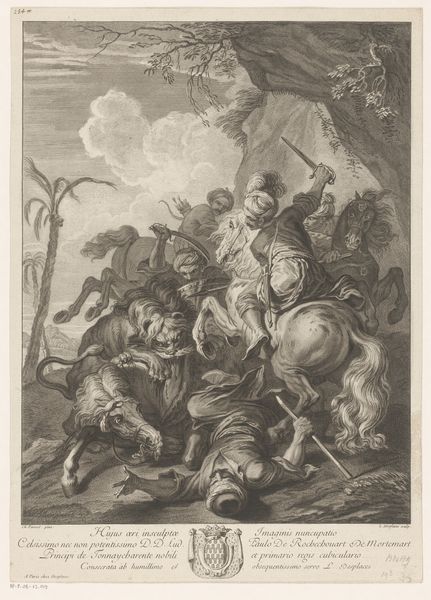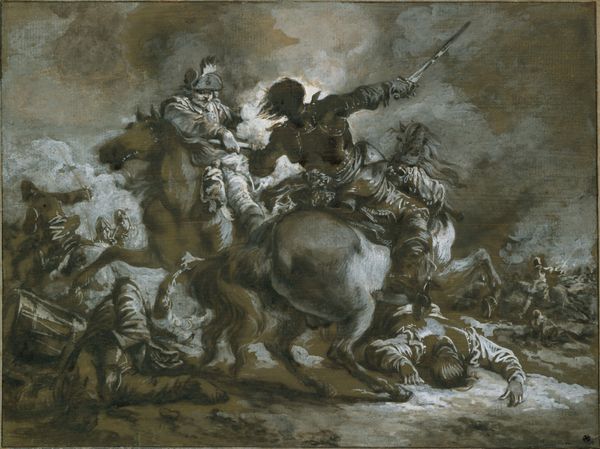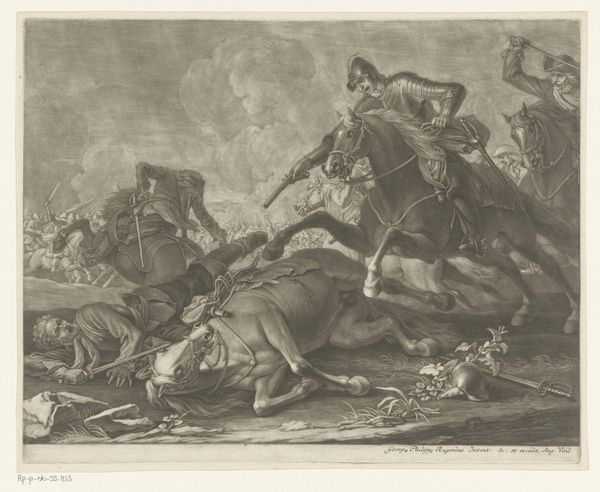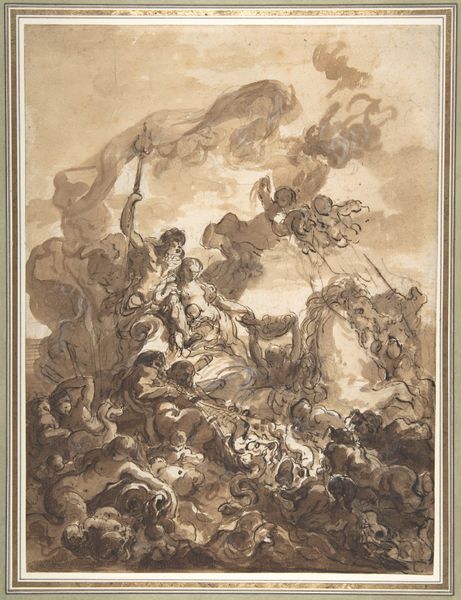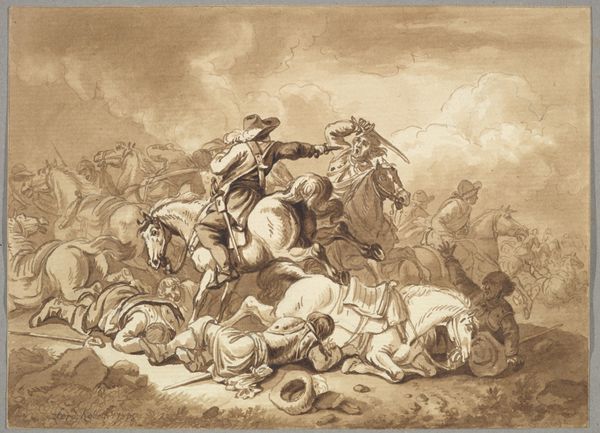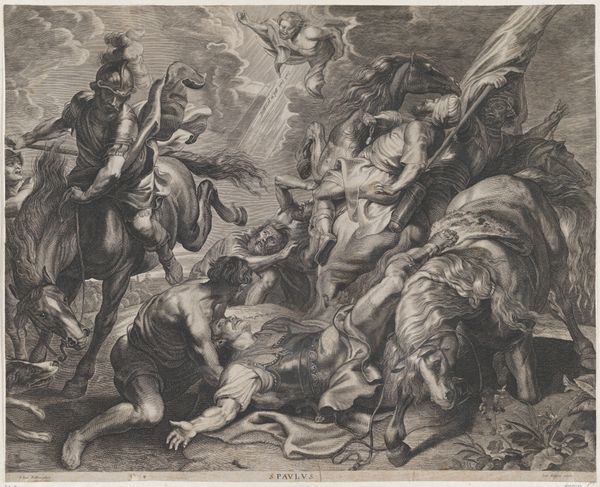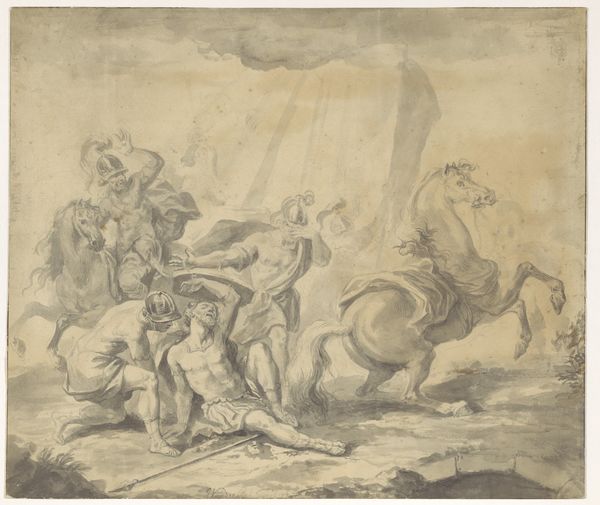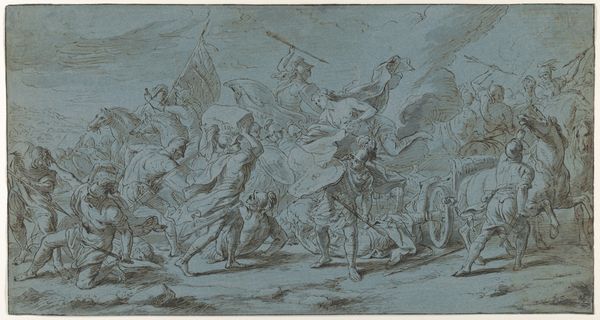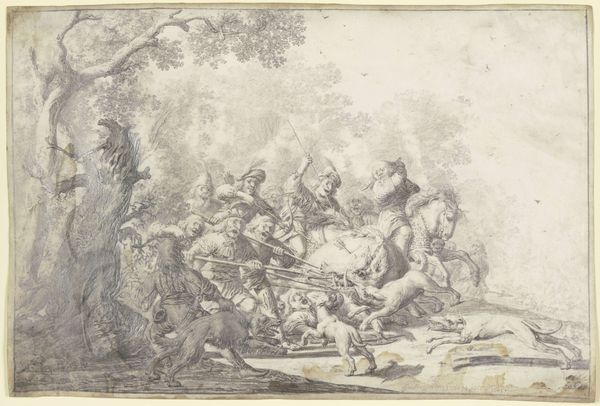
Cavalry Skirmish with a Fallen Soldier at Right 1740 - 1802
0:00
0:00
Dimensions: 6 15/16 x 9 5/16 in. (17.6 x 23.7 cm)
Copyright: Public Domain
Curator: This charcoal drawing is attributed to Francesco Casanova, dating somewhere between 1740 and 1802. It's entitled "Cavalry Skirmish with a Fallen Soldier at Right". Editor: It’s all smoke and fury, isn’t it? That wounded figure in the foreground is almost swallowed up by the churning earth, and the horses... those steeds are absolutely terrified, magnificent in their panic. Curator: Casanova's background as the brother of the notorious Giacomo Casanova adds an intriguing layer. He, unlike his sibling, sought refuge in the visual arts, eventually finding patronage amongst royalty and painting battle scenes such as this for aristocratic tastes. The artwork offers an insight into the romanticized, yet brutal, aspects of 18th-century military life. Editor: Romanticized indeed! Look how the light catches the plumes on that rider's helmet, practically celebrating him, while down below a soldier is lying defeated and bleeding into the ground. It’s such a sharp contradiction, so violent. Yet rendered with a strange detached elegance. There is something performative and stagy to this. Curator: Genre scenes, especially battle paintings like this one, were vehicles for the display of valor, often commissioned to reflect the patron's military accomplishments. Consider, though, how prints circulated these images to a wider public. Battle scenes influenced ideas about national pride. Casanova operated within that system, but there's something of an anxious awareness evident. Editor: Anxiety is right. Beyond the apparent glorification of conflict, there’s an awareness of death lurking there, not just with the fallen soldier but in the frantic pace. It isn’t all trumpets blaring and horses rearing, it's about a kind of messy and very real conclusion. Curator: It speaks volumes about how even supposedly celebratory or historical images often hold conflicting narratives. Looking closer, that foreground figure offers a different more grounded interpretation of the broader political function the piece served. Editor: It really does make you pause and reconsider what "victory" looks like in this light. A victory for whom? The plumes and fine horsemanship hide a deeper narrative of trauma and death, forever bound.
Comments
No comments
Be the first to comment and join the conversation on the ultimate creative platform.
